Ready the reed: Local oboist plays with heart — and spine, and back
Published 6:15 am Saturday, December 22, 2018
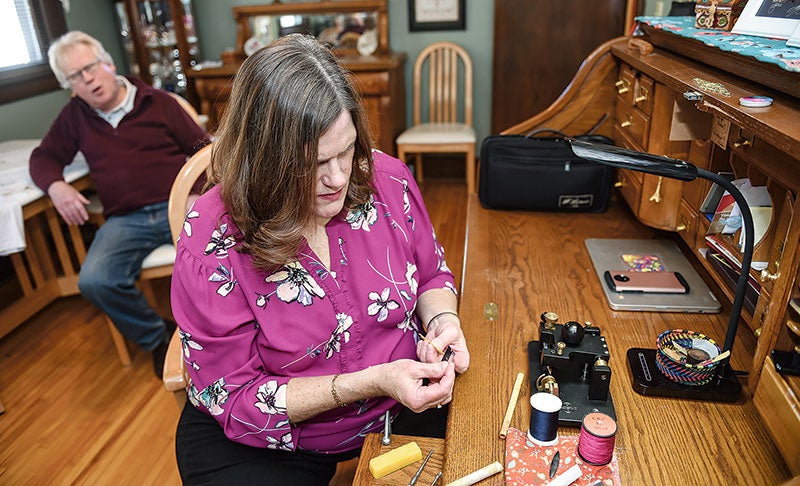
- Holly Dalager begins work on trimming and forming an oboe reed. Dalager makes all her own reeds and sells them to players in town. Photos by Eric Johnson/photodesk@austindailyherald.com
It might sound odd to most of us who don’t know much about musical instruments, this business of reed-making.
But Holly Dalager, principal oboist for the Austin Symphony Orchestra, knows all about it. She’s been making her own reeds for many, many years.
Now, just in case you think that is extreme, we’re not talking about the single reeds used for the playing of, say, a flute or a clarinet.
The oboe — as well as a bassoon and English horn — are double-reed instruments. A layman’s explanation of the difference between a double reed and single reed is that when you play with a double reed, the two reeds vibrate against one another as the musician blows air through them; when a single reed instrument is played, the reed and mouthpiece vibrate against one another.
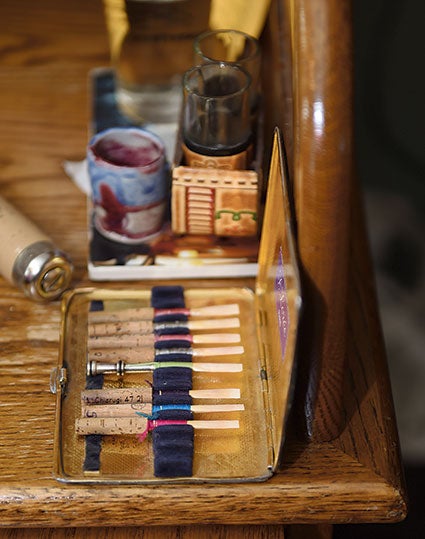
A set of handmade reeds sit out on Holly Dalager’s desk.
The demands that come from playing an oboe well — it has been deemed one of the hardest instruments to play — depends on a lot of things, and a reed is part of that line-up. Double reeds made by the musician can be shaped according to their own needs or wants. Even then, Dalager said, “climate, humidity, can all change” how an oboe will sound, since the environment can make the reed — made of a natural material — react differently. Many serious musicians make their own reeds to elicit a sound, tone and note to optimize their playing.
Cost also compels many oboe players to make their own reeds, since they are then less expensive. An average purchased reed will cost about $25 said Dalager. Dalager, who also sells to other double-reed musicians, sells her creations for $18.
Depending on how often they are used, double reeds only last about a month, she said, although some players like to push those limits.
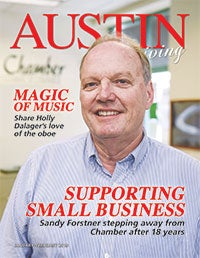
Read this story and more in the January-February 2019 edition of Austin Living Magazine, coming soon!
Dalager also gives private oboe lessons to younger students. Reeds can become overused and “get almost soggy — but beginners love that, because the reeds are more comfortable to play,” she said. She, however, makes sure students replace them so they understand the sound they are trying to achieve.
Dalager — an award-winning oboist who has also played with a number of orchestras in the Twin Cities, Rochester and LaCrosse, Wisconsin — has been making her own reeds since her college days at the University of Minnesota. It remains an exacting and time-consuming process.
Reeds are made of tube cane and undergo a process of splitting, gouging, soaking, shaping, tying and eventually, scraping and thinning the cane to within a paper-thin thickness that comes to a tip.
“The reed has an anatomy,” she said. “They have a tip, a heart, a spine and a back; if they don’t have all those things, they won’t work properly. And the tip has to be very, very thin.”
One single length of cane is worked upon during most of the process, bent in two while the work progresses. The cane is then cut at the bend to create the two reeds.
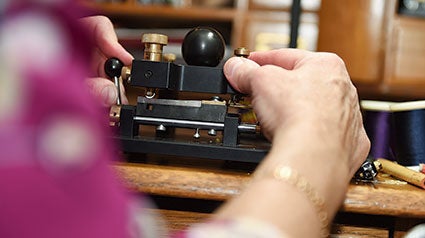
Holly Dalager uses a special tool to shape the oboe reeds she makes at home for herself and others.
Dalager recently purchased a machine — called a profiler — that helps scrape and thin the cane, obtained while she was attending the International Double Reed Society annual conference in Grenada, Spain earlier this year.
Using the profiler effectively took some time.
“It’s not a magic bullet; I shredded a lot of reeds” when she was getting used to using it,” she said. “I think I gouged 10-15 at the beginning.”
But today, she operates the machine with confidence. And that shouldn’t surprise anyone who knows Dalager. When a challenge presents itself, she quickly meets it.
She has years of experience playing the oboe and instructs private students on the oboe, piano and flute; she is also the director of a newly-revived band program at Pacelli, conducted through MacPhail Center for Music in Austin.
She averages about 25 performances a year between the Austin Symphony Orchestra, the Rochester Pops, and at her church. She also plays with a group of local musicians who meet in each other’s homes to play in an informal setting.
Her passion for the oboe has not dimmed over the years. Others appreciate her dedication to the playing and teaching of music.
Fellow ASO musician Phil Burkhart said her ability — and those homemade reeds — allows her to play “with wonderful style and musicality — as if she was singing through the oboe,” he said.
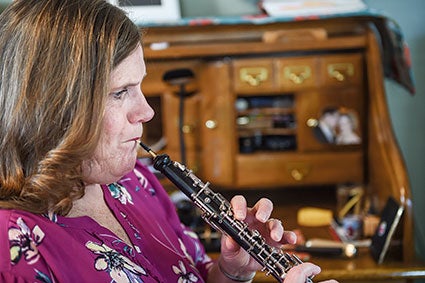
Holly Dalager plays her oboe using a reed she made herself at home.


